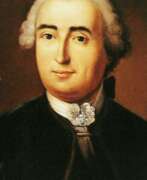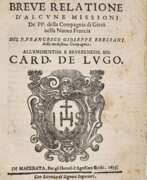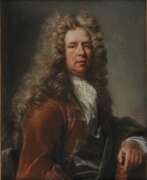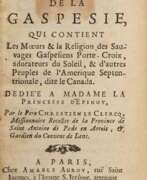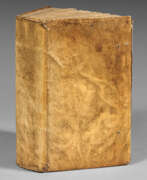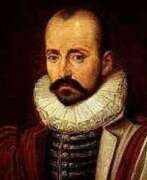Historians 17th century


John Bale was an English churchman, historian and controversialist, and Bishop of Ossory in Ireland. He wrote the oldest known historical verse drama in English (on the subject of King John), and developed and published a very extensive list of the works of British authors down to his own time, just as the monastic libraries were being dispersed. His unhappy disposition and habit of quarrelling earned him the nickname "bilious Bale".
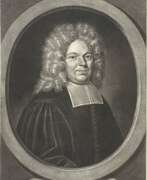

Jacques Basnage de Beauval was a French theologian and historian, diplomat and writer.
His father was a prominent lawyer and his grandfather and great-grandfather were pastors, Jacques studied theology and languages at the Academy of Saumur, then at Geneva and Sedan. In 1676, Jacques Basnage was appointed pastor at Rouen during the revocation of the Edict of Nantes, was forced to flee France for Holland, where he worked as a theologian, polemicist, historian, and diplomat in the service of the Grand Pensioner Hensius.
In 1717, on behalf of Holland, Basnage was sent to sign the treaty of the Triple Alliance (France, Holland, England). In the Annals of the United Provinces (1719-1726), compiled from the peace negotiations held at Münster, he displays breadth of vision, wisdom, and impartiality.
About 1719 Jacques Basnage was appointed historiographer of the Dutch states. He wrote several books on the Bible, the history of the Church, and the history of the Jewish people. Among the best known of these are his History of the Religion of the Protestant Denominations (1690), History of the Church of Jesus Christ to the Present Time (1699), written from Protestant positions, and History of the Jews (1706), as well as Jewish Antiquities, or Critical Notes on the Republic of the Jews (1713).


Joachim Bouvet was a French Jesuit monk and missionary who worked in China.
Joachim Bouvet was one of six Jesuit mathematicians chosen by Louis XIV to travel to China as his envoys and work as missionaries and scholars. In 1687 in Beijing, Bouvet began this work, especially in mathematics and astronomy, and in 1697 the Chinese emperor Kangxi (1654-1722) sent him as ambassador to the French king. Kangxi expressed his wish that Bouvet should bring more missionary scientists with him. Thus, in addition to his scholarly work, Bouvet was also an accomplished diplomat and served as a liaison between the Chinese Emperor Kangxi and King Louis XIV of France.
Bouvet brought to France a manuscript describing Kangxi's life with an eye for diplomatic subtleties, as well as a collection of drawings depicting graceful Chinese figures in traditional and ceremonial dress. The first French edition of The Historical Portrait of the Emperor of China was published in Paris in 1697, and was subsequently translated and published in other languages. And Bouvet returned to China in 1699 with ten new missionaries and a collection of King Louis XIV's engravings for Emperor Kangxi. He remained in China for the rest of his life.


Edward Browne was a British physician, president of the College of Physicians, traveler, historian and writer.
Edward was the eldest son of the famous British scientist Sir Thomas Browne (1605-1682), received a Bachelor of Medicine degree from Cambridge later and a Doctor of Medicine degree from Oxford, and became a member of the Royal Society. In addition to medicine, his subjects of study included botany, literature, and theology. He lived in London and traveled throughout Europe visiting museums, churches, and libraries (Italy, France, the Netherlands, and Germany). In 1673 he published an account of his travels in Eastern Europe, notable for its scrupulous accuracy.
Edward Browne also published two other works: a historical treatise and biographies of Themistocles and Sertorius. He was physician to King Charles II of England and left many manuscript notes on medicine. The chronicle of his journey through Thessaly is a unique and valuable source of information about the region in the second half of the 17th century. He was admitted to the College of Physicians in 1675 and served as its president from 1704 to 1708.


Romeyn de Hooghe was a Dutch painter, sculptor, engraver and caricaturist of the late Baroque period, writer and philosopher.
Hooghe became famous for his political caricatures of King Louis XIV of France and propaganda pamphlets in support of William of Orange. He portrayed the war against the French monarch and his allies as a struggle between freedom and religious despotism.
Romeyn de Hooghe was a superb engraver and created over 3,500 engravings during his lifetime. His most important work is Hieroglyphica of Merkbeelden der oude volkeren (Hieroglyphics or Symbols of the Ancient Peoples), where he appeared not only as a consummate master of engraving, but also as a historian, talented writer and philosopher. This book has long been regarded in Europe as one of the most authoritative sources on classical mythology. It contains 64 engravings illustrating all stages of the narrative of myths, ancient cults and beliefs, and the interpretation of scripture, a guide to medieval Europe.
Romeyn de Hooghe also illustrated books and painted large panels. During his lifetime he was widely recognized as a painter and sculptor not only in his own country but also in other European countries.
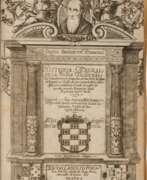

Antonio de San Román de Ribadeneyra, also San Román de Rivadeneira/Ribadeneira, was a Spanish Benedictine monk and historical writer.
He served at the monastery of San Zoil near Carrión de los Condes and wrote several historical books. In particular, an account of King Sebastião I's disastrous invasion of Morocco in 1578 and his death in battle entitled Jornada y muerte del Rey Don Sebastião de Portugal (1603). Antonio de San Román de Ribadeneyra also wrote A General History of Eastern India (1603). This historical work focuses on the Portuguese expeditions to Asia and the Americas, including a description of Christopher Columbus.


Gottfried Wilhelm Leibniz was a German philosopher and a prominent polymath in many fields of science.
Leibniz was a universal genius; he showed his talents in logic, mathematics, mechanics, physics, law, history, diplomacy, and linguistics, and in each of the disciplines he has serious scientific achievements. As a philosopher, he was a leading exponent of 17th-century rationalism and idealism.
Leibniz was a tireless worker and the greatest scholar of his time. In the fate of Leibniz, among other things, there is one interesting page: in 1697, he accidentally met the Russian Tsar Peter I during his trip to Europe. Their further meetings led to the realization of several grandiose projects in Russia, one of which was the establishment of the Academy of Sciences in St. Petersburg.
Gottfried Wilhelm Leibniz was also the founder and first president of the Berlin Academy of Sciences and a member of the Royal Society of London.


Jacob Leyssens / Lyssens was a Flemish painter and decorator. After training in Antwerp, he spent a long time in Rome. After his return to Antwerp, he was active as a painter and decorator and collaborated with prominent Antwerp still life painters such as Gaspar Peeter Verbruggen the Younger and Jan Baptist Bosschaert. He became a member of the Bentvueghels, an association of mainly Dutch and Flemish artists working in Rome. Only a few of his works are known, one of which is in the collection of the Hermitage Museum in Saint Petersburg. He decorated many rooms and ceilings in prominent residences and buildings in Antwerp. He is known to have collaborated as a staffage painter with other artists.


John Milton was a British poet and writer-publicist, intellectual and politician of the English Revolutionary period.
Milton first planned to become a priest, studied at Cambridge University, and then abandoned this activity. Several years he spent reading and self-education, learning many languages. In 1638 Milton traveled around the continent for about a year and a half, spending much time in Italy, primarily in Rome and Florence. He befriended young Italian literati, and his encounter with Galileo further influenced his writing.
Milton became best known for his poem Paradise Lost in Ten Books, which declares its purpose to justify the ways of God to man, but also touches on both universal and personal themes. Milton was the first author to use the word "cosmos" in our modern sense of "outer space," and his space epic takes place in a confidently Copernican universe.
In his prose works, Milton advocated the abolition of the Church of England and the execution of Charles I. From the outbreak of the English Civil Wars in 1642 and long after the restoration of Charles II as king in 1660, he spoke out against tyranny and state-sanctioned religion in all his works. As a Protestant, Milton was often in conflict with the Roman Catholic Church. As a civil servant, Milton became the voice of the English Commonwealth after 1649 and then under Oliver Cromwell, conducting international correspondence and defending the government against polemical attacks from abroad.
John Milton is considered the most important English writer after William Shakespeare. Author of political pamphlets and religious treatises, he is one of the most famous writers of the 1650s, the vibrant era of the English Revolution (Civil War).


Francisco Pacheco del Río, baptized on November 3, 1564, and passing away on November 27, 1644, was a distinguished Spanish painter. Renowned for his dual role as Diego Velázquez's teacher and father-in-law, Pacheco's influence extends beyond his familial ties, contributing significantly to the arts through his seminal textbook, "Art of Painting." This work remains a crucial resource for understanding 17th-century artistic practices in Spain. Often referred to as the "Vasari of Seville," Pacheco's insights into painting theories and reflections on his contemporaries have left an indelible mark on the history of art, despite criticisms of his conventional execution in painting.
Pacheco's early life was marked by an immersive education in art, learning from Luis Fernandez and drawing inspiration from Italian masters. His journey included a pivotal sojourn to Madrid and Toledo in 1611 to study the works of El Greco, which further enriched his artistic repertoire. Upon his return to Seville, Pacheco opened an art school, laying the groundwork for his future contributions to art education and theory.
His career was notably characterized by his position as the official censor for Seville's Inquisition, which influenced his academic approach to religious subjects. Despite this, his paintings, such as the Last Judgment and Martyrs of Granada, are celebrated for their monumental scale. Pacheco's most enduring legacy, however, may be his influence on Diego Velázquez, whom he mentored for six years. Velázquez's marriage to Pacheco's daughter Juana in 1618 further solidified their personal and professional bonds. Pacheco's "Arte de la pintura" not only provided invaluable biographical information on Spanish painters of his era but also laid down foundational theories on iconography, materials, and technique.
For those interested in exploring Francisco Pacheco del Río's works further, notable pieces can be found in prestigious collections, such as the Museo Nacional del Prado, enriching our understanding of his impact on the art world.
Art enthusiasts, collectors, and experts are encouraged to sign up for updates to stay informed about new product sales and auction events related to Francisco Pacheco del Río, ensuring you remain at the forefront of developments in the fascinating world of art and antiques.


Nicolas Sanson the Elder (Nicolas Sanson d’Abbeville) was a French cartographer who served under two kings in matters of geography. He has been called the "father of French cartography." He gave lessons in geography both to Louis XIII and to Louis XIV. Active from 1627, Sanson issued his first map of importance, the "Postes de France". After publishing several general atlases himself he became the associate of Pierre Mariette, a publisher of prints. He died in Paris on 7 July 1667. Two younger sons succeeded him as geographers to the king. Sanson's maps were used as a model by his son, Guillaume, and, at least initially, by Duval, his nephew, in his 1664 folio map and 1660 atlas minor map. In 1692 Hubert Jaillot collected Sanson's maps in an Atlas nouveau.


Israël Spach (also Israelis Spachius) was a German and French physician, medical writer and teacher of medicine.
Spach studied at the University of Tübingen, receiving the degree of doctor of medicine, and from 1589 taught medicine and Hebrew at the University of Strasbourg, with the rank of professor of medicine. He was characterized by a high bibliographical education.
Spach was the author of a gynecological encyclopedia, Gynaeciorum sive de mulierum tum communibus, tum gravidarum, parientium, et puerperarum affectibus et morbis, published in Strasbourg in 1597. It was a very significant book for its time.
Israël Spach also wrote Nomenclator scriptorum medicorum..., published in Frankfurt in 1591, which was the first attempt at a bibliography on medical subjects. It was organized under very broad subject headings, with indexes of authors and subjects.


Jacob van der Heyden was a Flemish Baroque painter, sculptor and engraver. According to Houbraken he was a painter from Strasbourg who painted for royalty. According to the RKD he worked in Strasbourg, Frankfurt, and Sweden. and was known for portraits, landscapes and historical allegories. Most of his work that survives today are engravings. He died in Brussels.


Frans van Sterbeeck or Johannes Franciscus van Sterbeeck was a Flemish clergyman, botanist and mycologist, painter, architect and historian.
In addition to his work as a priest, van Sterbeeck had a passion for botany and corresponded with prominent botanists of his time, including John Ray. In particular, he made a serious study of fungi and as a result produced a work entitled Theatrum fungorum oft het tooneel der Campernoelien, published in Antwerp in 1675. This richly illustrated book in Dutch describes the edible and poisonous species of mushrooms.
Frans van Sterbeeck also designed the main altar of the Antwerp Preaching Church and the portal of the Beguinage Church in 1680, and wrote two works on historical subjects.


Joachim von Sandrart was a German Baroque art-historian and painter, active in Amsterdam during the Dutch Golden Age. He is most significant for his collection of biographies of Dutch and German artists the Teutsche Academie, published between 1675 and 1680.


